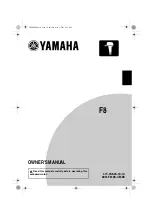
1-8
Chapter 1: Product introduction
1.4
System memory
This motherboard comes with two Double Data Rate 4 (DDR4) Dual Inline Memory Module
(DIMM) sockets. The figure illustrates the location of the DDR4 DIMM sockets:
Channel
Sockets
Channel A
DIMM_A1*
Channel B
DIMM_B1*
DIMM_B1*
DIMM_A1*
•
You may install varying memory sizes in Channel A and Channel B. The system
maps the total size of the lower-sized channel for the dual-channel configuration. Any
excess memory from the higher-sized channel is then mapped for single-channel
operation.
•
Always install DIMMs with the same CAS latency. For optimal compatibility, we
recommend that you install memory modules of the same version or date code (D/C)
from the same vendor. Check with the retailer to get the correct memory modules.
•
For 10
th
Gen Intel
®
processors, only Core™ i9/i7 CPUs support 2933/2800/2666/2400/
2133 natively, others will run at the maximum transfer rate of DDR4 2666MHz.
•
The default memory operation frequency is dependent on its Serial Presence Detect
(SPD), which is the standard way of accessing information from a memory module.
Under the default state, some memory modules for overclocking may operate at a
lower frequency than the vendor-marked value.
•
For system stability, use a more efficient memory cooling system to support a full
memory load (2 DIMMs).
•
Refer to www.asus.com
for the latest Memory QVL (Qualified Vendors List).
Recommended memory configurations
DIMM_A1*
DIMM_B1*
DIMM_B1*
DIMM_A1*












































